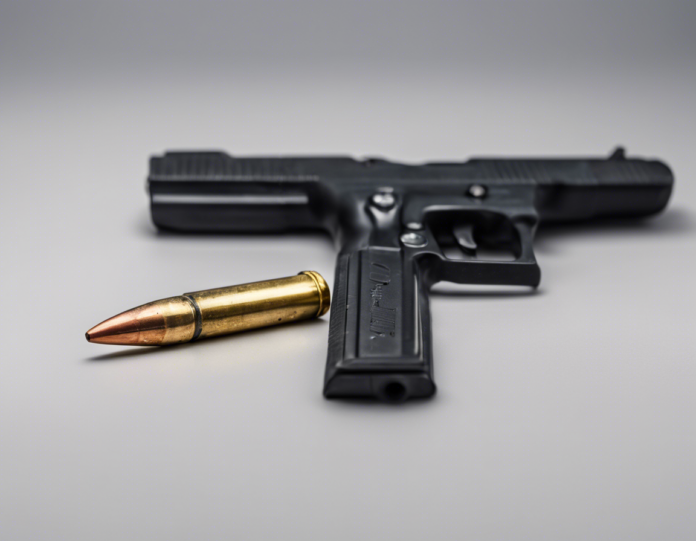In the realm of firearms, the physics behind a bullet being fired from a gun is a complex but fascinating subject. From the moment the trigger is pulled to the impact of the bullet on its target, numerous physical principles come into play. Understanding these principles not only sheds light on the mechanics of shooting but also plays a crucial role in enhancing safety, accuracy, and overall performance.
The Components of a Bullet
Before delving into the physics of a fired bullet, it’s essential to understand its basic components. A typical bullet consists of the following key parts:
- Projectile: The bullet itself is the projectile that is fired from the gun barrel.
- Cartridge: The cartridge contains the bullet, gunpowder, and primer. When ignited, the gunpowder generates gases to propel the bullet forward.
- Casing: The casing holds all the components together and seals the gun chamber to prevent gas leaks.
The Firing Process
When the trigger is pulled, several physical phenomena take place in rapid succession, leading to the ejection of the bullet from the gun:
- Ignition: The firing pin strikes the primer in the cartridge, igniting it. The primer, in turn, ignites the gunpowder.
- Combustion: The ignited gunpowder undergoes rapid combustion, producing a large volume of hot gases. The pressure from these expanding gases forces the bullet out of the cartridge and down the barrel.
- Acceleration: As the bullet travels through the barrel, the expanding gases continue to exert pressure behind it, accelerating it to high velocities.
- Barrel Exit: Once the bullet reaches the end of the barrel, it exits into the air at a high speed, propelled by the residual energy from the combustion of the gunpowder.
Ballistics and Trajectory
The study of the flight of a bullet after it leaves the muzzle of the gun is known as ballistics. Several key factors influence the trajectory of a fired bullet, including:
- Muzzle Velocity: This refers to the speed at which the bullet leaves the muzzle of the gun. It is a crucial factor in determining the range and impact force of the bullet.
- Drag Force: As the bullet travels through the air, it experiences drag force due to air resistance. This force slows down the bullet and causes it to drop over distance.
- Gravity: The force of gravity also acts on the bullet, pulling it downwards. This gravitational force, combined with drag force, causes the bullet to follow a curved trajectory known as a ballistic curve.
- Spin: Some bullets are designed with a spinning motion, known as spin stabilization, which helps improve accuracy and stability during flight.
Impact and Penetration
When a fired bullet strikes a target, its impact and penetration are determined by several key factors:
- Kinetic Energy: The energy of motion, known as kinetic energy, is a critical factor in determining the impact force of a bullet. Higher velocities result in greater kinetic energy and thus more damage upon impact.
- Bullet Design: The shape and composition of the bullet play a significant role in its penetration capabilities. Armor-piercing bullets, for example, are designed to penetrate hard surfaces, while hollow-point bullets are designed to expand upon impact for maximum tissue damage.
- Target Material: The type of material the bullet strikes also impacts its penetration. Bullets may behave differently when hitting soft targets, such as flesh, compared to hard surfaces like metal.
Safety Considerations
Understanding the physics of a fired bullet is not only crucial for improving shooting accuracy but also for ensuring safety. Several safety considerations related to firearms and bullets include:
- Recoil: The backward force generated when a gun is fired, known as recoil, is a result of Newton’s third law of motion. Proper stance and grip can help manage recoil and improve shooting control.
- Muzzle Awareness: Keeping the muzzle of the gun pointed in a safe direction at all times is essential to prevent accidental discharge and injuries.
- Proper Handling: Following loading, unloading, and firing protocols recommended by firearm manufacturers is crucial to prevent accidents and ensure safe gun operation.
Frequently Asked Questions (FAQs)
- What factors affect the accuracy of a fired bullet?
-
Factors such as muzzle velocity, bullet design, wind conditions, and shooter technique can all impact the accuracy of a fired bullet.
-
How does barrel length affect the velocity of a bullet?
-
In general, a longer barrel can provide more time for propellant gases to accelerate the bullet, resulting in higher muzzle velocities.
-
Can bullets travel in a straight line over long distances?
-
Despite being fired in a seemingly straight line, bullets are always subject to gravity and air resistance, causing them to follow a curved trajectory.
-
What is terminal ballistics?
-
Terminal ballistics is the study of how bullets behave upon impact with a target, including penetration, expansion, and energy transfer.
-
How is bullet trajectory affected by external factors like wind?
- Wind can deflect a bullet off its intended path, especially at longer distances. Skilled shooters adjust for wind speed and direction to maintain accuracy.
Understanding the physics of a fired bullet is not only essential for firearm enthusiasts but also for anyone interested in the science behind shooting sports and ballistics. By grasping the principles discussed above, individuals can gain a deeper appreciation for the precision and dynamics involved in launching a tiny projectile at high speeds with remarkable accuracy.





